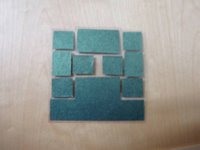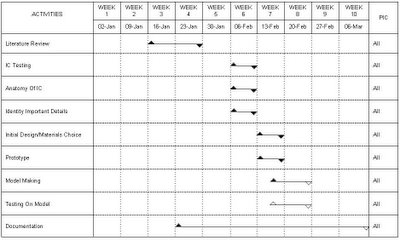Model Making Process
Model body(exterior part)
The body of the IC model is made out of black cardboard. The cardboard is cut into 5 small parts and is assembled according to the enlarged dimension of a real IC. The top part of the body is made out of transparent paper, it serve as though it is a cut through of the IC, so that it can properly shows the interior of the IC model. All joins are bonded together using super glue.
IC model pins(exterior part)
The IC model pins are made from aluminium sheet. It consists of 14 aluminium pins. A reference pin is first drawn on the sheet based on enlarged dimension of real IC pin, and is cut out. The reference pin is then served as an outline to draw the remaining 13 pins. After that, all pins are cut out. They are then bent on the upper side, which form the slot-in parts to be slot into the body.
Wafer chip(interior part)
The wafer chip inside the IC model is made from a combination of golden foil, aluminium foil, dark green wrapping paper, and transparent paper. The golden foil is cut to represent internal wiring connecting to the wafer chip to the IC pins. It consists of 14 long strips, bent and arranged into regular shape. Golden foil is also used to represent connecting wires on the chip, capacitor, transistor and resistor. Aluminium foil is used mainly to represent resistors and transistors. Dark green wrapping paper serve as the insulating semiconductor layers of the wafer. It is cut into several sizes and houses the electronic components. The transparent paper is used as the base of the wafer chip. The insulating layers are glued on to it.



Top left: Wafer base(transparent paper)
Top right: Insulating semiconductor layers(dark green wrapping paper)
Bottom: Completed wafer chip











 Hollow triangulars represent proposed period.
Hollow triangulars represent proposed period.
